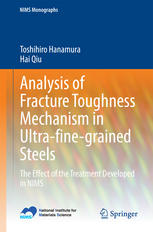

Most ebook files are in PDF format, so you can easily read them using various software such as Foxit Reader or directly on the Google Chrome browser.
Some ebook files are released by publishers in other formats such as .awz, .mobi, .epub, .fb2, etc. You may need to install specific software to read these formats on mobile/PC, such as Calibre.
Please read the tutorial at this link: https://ebookbell.com/faq
We offer FREE conversion to the popular formats you request; however, this may take some time. Therefore, right after payment, please email us, and we will try to provide the service as quickly as possible.
For some exceptional file formats or broken links (if any), please refrain from opening any disputes. Instead, email us first, and we will try to assist within a maximum of 6 hours.
EbookBell Team

4.1
50 reviewsIn this book, advanced steel technologies mainly developed at the National Institute for Materials Science (NIMS), Japan, for structure control, mechanical properties, and the related mechanisms are introduced and discussed. NIMS has long worked on developing advanced steel techniques, namely, producing advanced steels by using only simple alloying elements such as carbon, manganese, and silicon, and also by utilizing steel scrap. The hope is that this approach will lead to a technology of a so-called steel-to-steel recycling process, with the ultimate goal of a recycling process such as an automotive-steel-to-automotive-steel recycling process to take the place of the current cascade-type recycling system. The main idea is to utilize ultra-grain refining structures and hetero structures as well as martensite structures. In particular, the focus of this book is on tensile strength and toughness of advanced steels from both the fundamental and engineering points of view. Fundamentally, a unique approach to analysis is taken, based on fracture surface energy as effective grain size is employed to better understand the mechanism of property improvement. From the engineering point of view, in fracture toughness such factors as crack tip opening displacement (CTOD) of advanced steels are evaluated in comparison with those of conventional steels.